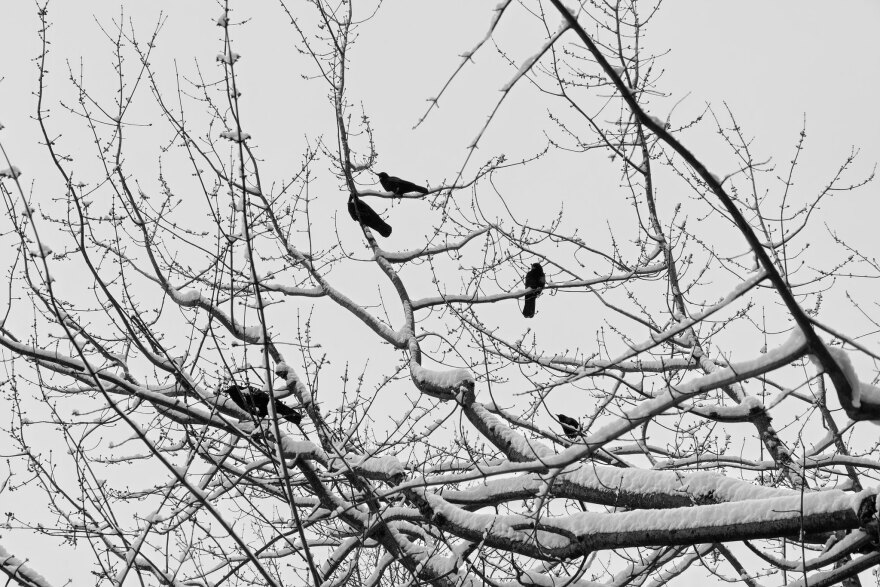By this point in the year, cricket song has quieted, and the silence of Early Winter offers a sound of solitude, an absence that opens space for reflection and renewal.
The Silent Cricket Moon, like all the Moons between Scorpio and Pisces, can be cruel and challenging, but it also offers a context for personal centering, as well as for finishing the work of the year and preparing for the year ahead.
While crickets sleep, the last leaves fall from woodland asters. Mice and voles find safety in your walls and attic. The stubborn Zelcova, beech and pear leaves finally come down. Crows gather in vast murders to feed in the harvested fields. Starlings swirl in vast murmurations. Hoary goldenrod and brittle great ragweed break in storm gusts. Jerusalem artichokes lean against each other, leaves clutching leaves. Pokeweed stems, hollow and empty, rattle in the wind. Snow and overwintering robins pull off the last honeysuckle berries. Winterberry branches bend to let down their fruit. Bittersweet hulls split away from their branches. In spite of the chill and darkness, Lenten roses gradually show their buds, and sap quivers in the maples every thaw.
If we choose, all these signs and creatures become allies in the darkest days, holding promises and lessons to ponder by the fires we build to guard us from the cold.
This is Bill Felker with Poor Will’s Almanack. I’ll be back again next week with notes for the transition week to Early Winter. In the meantime, watch the signs and make them your allies in the frigid days ahead.



